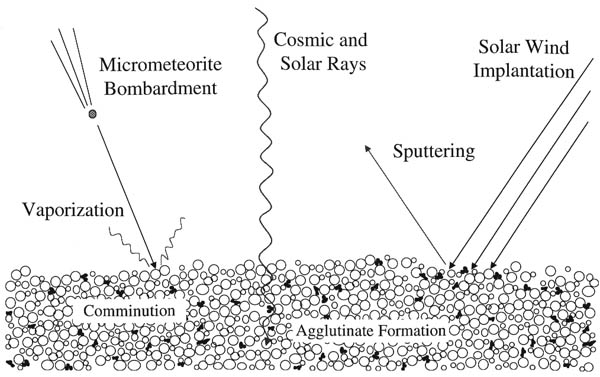Dictionary of Space Concepts
The Dictionary of Space Concepts (DSC) provides not only the basis for the advanced English language classes of the Multilingualism Programme; it also serves as larger online support platform for all UNIVERSEH students, with the aim of training specific space terminologies across various fields connected to the space sector. The DSC combines core space concepts and with helpful illustrations, all in an open-project format, which is freely available to everyone inside and outside UNIVERSEH. We welcome your contributions, comments, and expertise!
Do you want to take part of developing the Dictionary of Space Concepts? Enrol in the Collaborative Dictionary of Space Concepts.
Special | A | B | C | D | E | F | G | H | I | J | K | L | M | N | O | P | Q | R | S | T | U | V | W | X | Y | Z | ALL
S |
|---|
Solar sail | |||
|---|---|---|---|
Midjourney (2023, May 31). . midjourney. midjourney.com Short Definition: Solar sails (also known as light sail or photon sail) are a method of spacecraft propulsion using radiation pressure exerted by starlight on large mirrors. Solar sails can be used instead of traditional fuel consumption. First proposed in the 1980s as alternative propulsion method for low-weight long-distance spacecrafts, the first real usage of the solar sail system was in JAXA’s IKAROS mission, launched in 2010. Detailed Definition: The Solar sails use a phenomenon called solar pressure, which is the force produced by the impact of sunlight photons on the surface of the spacecraft. Normally, solar pressure is affecting all spacecrafts during flights and must be accounted for in trajectory planning, but in that specific case it is used as thrust. Vessels using solar sails must be lightweight as the total force exerted on an eight hundred by eight hundred meters solar sail is about 5 Newtons at Earth's distance from the Sun, so this propulsion method requires specially constructed spacecraft. If solar sails are implemented in space vessel it can produce propulsion without need of fuel usage and thus can be great for small satellites to travel to distant objects without great amount of storage for fuel and engines. The negative side of this technology is significantly small force compared to traditional liquid fuel engines and fragile sail build. Also, this system cannot be used far away from “propulsion” star, as thrust generated by the solar sail is inversely proportional to the square of the distance. Etymology: Solar
- From Latin sōlāris, from sōl (“sun”), Sample Sentence(s): “The IKAROS probe is the world's first spacecraft to use solar sailing as the main propulsion system.” Translations: French: Voile solaire German: Sonnensegel Polish: Żagiel słoneczny Swedish: Sol segel Links to Videos/Articles: https://www.researchgate.net/publication/305884757_Solar_sail_technology-A_state_of_the_art_review | |||
Space debris | ||
|---|---|---|
 Image source: Midjourney (2023, June 01). AI illustration of space debris in earths orbit. midjourney. midjourney.com Short Definition: Detailed Definition: space -> spatium from Latin - meaning: space debris -> débriser from French - meaning: break down Sample Sentence(s): French: Débris spatiaux German: Weltraummüll / Weltraumschrott Polish: Śmieci kosmiczne Swedish: Rymdskepp Spanish: Desechos espaciales Links to Videos/Articles: https://youtu.be/f513HPs24VM [Space Debris by the European Space Agency, ESA] https://www.nasa.gov/news/debris_faq.html https://www.nasa.gov/centers/hq/library/find/bibliographies/space_debris | ||
Space rendezvous | |||
|---|---|---|---|
 Source: Short Definition: A space rendezvous is a series of orbital maneuvers focused on bringing together two orbiting spacecrafts. In most cases, a space rendezvous occurs between a space station and a spaceship trying to dock to it. Rendezvous requires a precise match of the orbital velocities and position vectors of spacecrafts, allowing them to remain at a constant distance during final maneuvers or docking. Detailed Definition: A space rendezvous is an approach in space to a very close distance (e.g. within visual contact) between spacecrafts or between a spacecraft and a celestial object at zero or very low relative speed. The space rendezvous requires carrying out complex orbital maneuvers, which must be completed in a minimum time without excessive consumption of the propellant. Rendezvous may or may not be followed by docking or berthing, procedures which bring the spacecraft into physical contact and usually create a link between them. NASA's first attempt at rendezvous was made on June 3, 1965, when astronaut Jim McDivitt tried to maneuver his Gemini 4 spacecraft to meet the Titan II launch vehicle's upper stage. Rendezvous was first successfully accomplished by NASA on December 15, 1965, and then lead to success of Apollo's program and moon landing. Etymology: Space - From Middle English space, from Anglo-Norman space, variant of espace, espas et al., and spaze, variant of espace, from Latin spatium(“to stretch, to pull”). Sample Sentence(s): The first space rendezvous was in 1965 during Gemini program Translations: French: Rendez-vous spatial German: der Raumfahrt Rendezvous Polish: Dokowanie Swedish: Rymdmöte Links to Videos/Articles: https://airandspace.si.edu/stories/editorial/worlds-first-space-rendezvous https://www.youtube.com/watch?v=oNXPtZDS-cg | |||
Space Station Remote Manipulator System (SSRMS) | |||
|---|---|---|---|
Source: https://www.nasa.gov/image-feature/the-canadarm2-robotic-arm-is-poised-to-capture-cygnus Short Definition: Ssrms is a manipulator system equipped with two long arms, seven attachment points, and various precision robotic equipment is also known as 'Canadarm2', it is a second-generation robotic arm system in the Mobile Servicing System of the International Space Station, whose main purpose is to take part in high-tonnage/cosmic catching missions. It is the most efficient heavy-duty robotic system (Up to 116 tons) left on the ISS after the Canadarm1 was retired in July 2011. Detailed Definition: It is a space manipulator attached to the international space station.As an improved version of the Canadarm 1, the Canadarm 2 is aimed at enhancing; size, load-carrying capacity, arm reach, durability, and increased mobility. It is a robotic system that assists astronauts with payload handling, approach and docking of space shuttles, making Cosmic catches, and maintenance of the station. The robotic arm, which can be managed by the astronauts on the ISS and the NASA and CSA centers on the world, is also adorned with advanced imaging-light systems. It is also used as an anchor point by attaching it to other robotic equipment itself. Sample Sentence(s): ''Canadarm2 is made up of parts that can be replaced while in space.'' ''Canadarm 2 will also help to berth the Axiom Space Station modules to the ISS.'' Translations: French Système de manipulateur à distance de la station spatiale Italian Sistema di manipolazione remota della stazione spaziale Polish System zdalnego manipulatora stacji kosmicznej Turkish Uzay İstasyonu Uzaktan Manipülatör Sistemi German Fernmanipulatorsystem der Raumstation Links to Videos/articles: https://www.esa.int/ESA_Multimedia/Images/2020/04/Canadarm2_robotic_arm https://www.asc-csa.gc.ca/eng/iss/canadarm2/about.asp https://www.nasa.gov/mission_pages/station/structure/elements/remote-manipulator-system-canadarm2/ | |||
Space tether | |||
|---|---|---|---|
Source: https://www.colorado.edu/faculty/kantha/sites/default/files/attached-files/sandoval_space_tethers.pdf proposed catch and release cycle of a spinning space tether Short Definition: Space tethers are long cables attached to a counterweight. It has many applications in space such as propulsion and momentum exchange etc. This idea could help lowering the amount of money needed to transport payload into low earth orbit by hooking onto specialized spacecrafts in the future and either increasing the speed for space travel or decrease it to prepare for landing. Detailed Definition: Despite recent achievements in making spacecrafts fully reusable, space travel and space infrastructure continues to be quite expensive and only reserved for a few institutions and companies. The aim is to commercialize space, but to achieve that goal we still need to vastly decrease the amount of money to get payload into low earth orbit. Skyhooks, a special type of space tethers, could help lowering the cost of transportation into space. The idea is to attach cable hundreds or thousands of kilometres to a counterweight and the weight spins in a circle. The tether will be lowered to be 80-150 kilometres above the earth, where it can hook onto spacecrafts and let them go at the best point to maximize speed adjustment. This idea could make reusable rockets much lighter and cheaper by lowering the amount of rocket fuel needed. This idea acts as a “orbital battery”, where decreasing the spacecrafts speed will increase the amount of energy in the tether and increasing the spacecrafts speed will decrease the amount of energy in the tether.Etymology: Space from Latinspatium Tether from proto-Germanic teudrą(“rope;cord;shaft”)Sample Sentence(s): Space tethers could revolutionize the space industry by lowering the money needed to get payload into low earth orbit. French: Links to Videos/Articles: https://science.nasa.gov/tether-space | |||
Space Weathering | |||
|---|---|---|---|
Source: https://planetfacts.org/space-weathering/ Short Definition: Space weathering is a general term used for different surface processes which happen to objects and celestial bodies in the harsh environment of outer space. Detailed Definition: Bodies in the outer space, which do not have atmospheres, are exposed to a number of devastating weathering processes, such as collisions of galactic or solar cosmic rays, the irradiation, implantation and spluttering from solar wind particles; the bombardment by different sizes of meteorites and micrometeorites. These phenomena are encompassed in the blanket term space weathering. The toll that space weathering takes on both the physical and optical properties of the surfaces of many celestial bodies is an important issue, as remotely sensed data needs to be processed appropriately. Etymology: "space" - Old French espace, Latin spatium - room, area, distance, stretch of time "weather" - Old English weder, Old Saxon wedar, Old Norse veðr, German wetar - wind, weather "we-" - Proto-Germanic wedra - to blow Sample Sentence(s): "Space weathering has to be accounted for during the design of space equipment." Translations of Terms/Concepts into Partner Languages French: Altération de l'espace German: Weltraumverwitterung Polish: Wietrzenie kosmiczne Swedish: Rymdvittring Links to Videos/Articles: https://spaceweather.com https://sservi.nasa.gov/articles/space-weathering-on-airless-bodies/ https://www.youtube.com/watch?v=fdzZdFZrGHA | |||
Spacecraft Propulsion | ||
|---|---|---|
Short Definition: Spacecraft Propulsion is a method utilised to accelerate a spacecraft and artificial satellites. Different methods exist for this purpose, with each method having its advantages and drawbacks. Most spacecrafts nowadays are propelled by what is called a rocket engine, which propels the space probe by heating the reaction mass and allowing it to eject out from the rear of the vehicle. Detailed Definition: A spacecraft propulsion system has the purpose of changing the velocity (acceleration) of a spacecraft and artificial satellites. It is utilised to both leave earth and for orbit insertion. To launch a spacecraft from earth, the propulsion method must overcome a higher gravitational pull to provide a positive net acceleration. The difficulty of achieving this change is directly proportional to the size of the vehicle, which is why spacecraft performance is generally discussed in amount of change in momentum per unit of propellant consumed, known as “specific impulse”. The higher the specific impulse, the better the efficiency. Once launched, satellites and spacecrafts may need to be moved between orbits, thus requiring propulsion. When a satellite has exhausted its ability to adjust its orbit, its useful life is over. The methods areas are divided into four groups: (1.) chemical propulsion (reaction and rocket engines), (2.) electric propulsion (ion, electrothermal and electromagnetic thrusters), (3.) advanced propulsion technologies and (4) supporting technologies. Etymology:
Sample sentence(s):
Translations of Terms/Concepts into Partner Languages:
Links to Videos/Articles: Space Propulsion: a Survey Study About Current and Future Technologies. DOI: 10.5028/jatm.v10.829 | ||
Special Purpose Dextrous Manipulator (SPDM) | |||
|---|---|---|---|
Source: Short Definition: A Special Purpose Dextrous Manipulator (SPDM), also called 'Dextre', is a system that is part of the Mobile Servicing System (MSS) mounted on the International Space Station (ISS). This robotic system is designed to assist astronauts in spaces where human reach and endurance are limited. Detailed Definition: It is a multi-talented robot added to Canadarm2 on March 16, 2008, by Nasa astronauts Mike Foreman and Richard Linnehan. Designed to withstand the harsh conditions of space, this robot supports astronauts for small tasks around the ISS. These tasks include installing and maintaining the various parts of the ISS's exterior, maintaining the Station's electrical system, and pre-testing new equipment to be added. This robot, which has two hands as sensitive as human hands, has a retractable motorized wrench, camera, light, and connection module in both hands. Sample Sentence(s):' 'This multi-talented robot can ride on the end of Canadarm2 to move from worksite to worksite, or be ferried on the Mobile Base System.'' ''Dextre is the most sophisticated space robot ever built.'' Translations: French: Manipulateur agile à usage spécial German: Geschickter Manipulator für besondere Zwecke Italian: Manipolatore abile per scopi speciali Polish: Zręczny manipulator specjalnego przeznaczenia Turkish: Özel Amaçlı Hünerli Manipülatör Links to Videos/Articles: https://www.nasa.gov/mission_pages/station/structure/elements/special-purpose-dextrous-manipulator/ https://en.wikipedia.org/wiki/Mobile_Servicing_System https://www.asc-csa.gc.ca/eng/iss/dextre/about.asp https://www.asc-csa.gc.ca/eng/iss/dextre/ https://www.asc-csa.gc.ca/eng/iss/dextre/data-sheet.asp https://www.youtube.com/watch?v=nNcRDBK8zxY&ab_channel=CanadianSpaceAgency | |||
UNIVERSEH is an alliance of:
All rights reserved. Funded by the European Union. Views and opinions expressed are however those of the author(s) only and do not necessarily reflect those of the European Union or the European Education and Culture Executive Agency (EACEA). Neither the European Union nor the granting authority can be held responsible for them.












